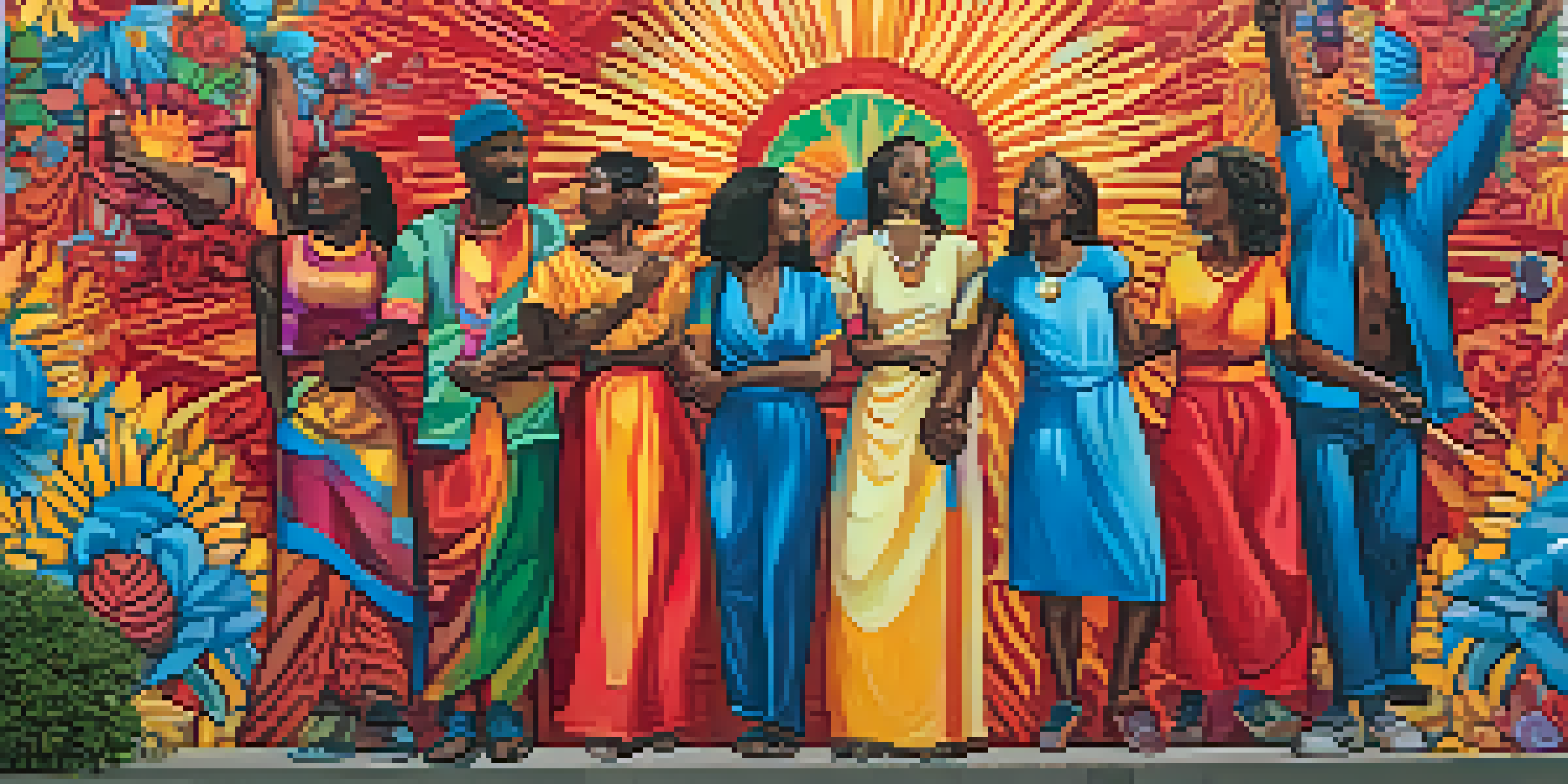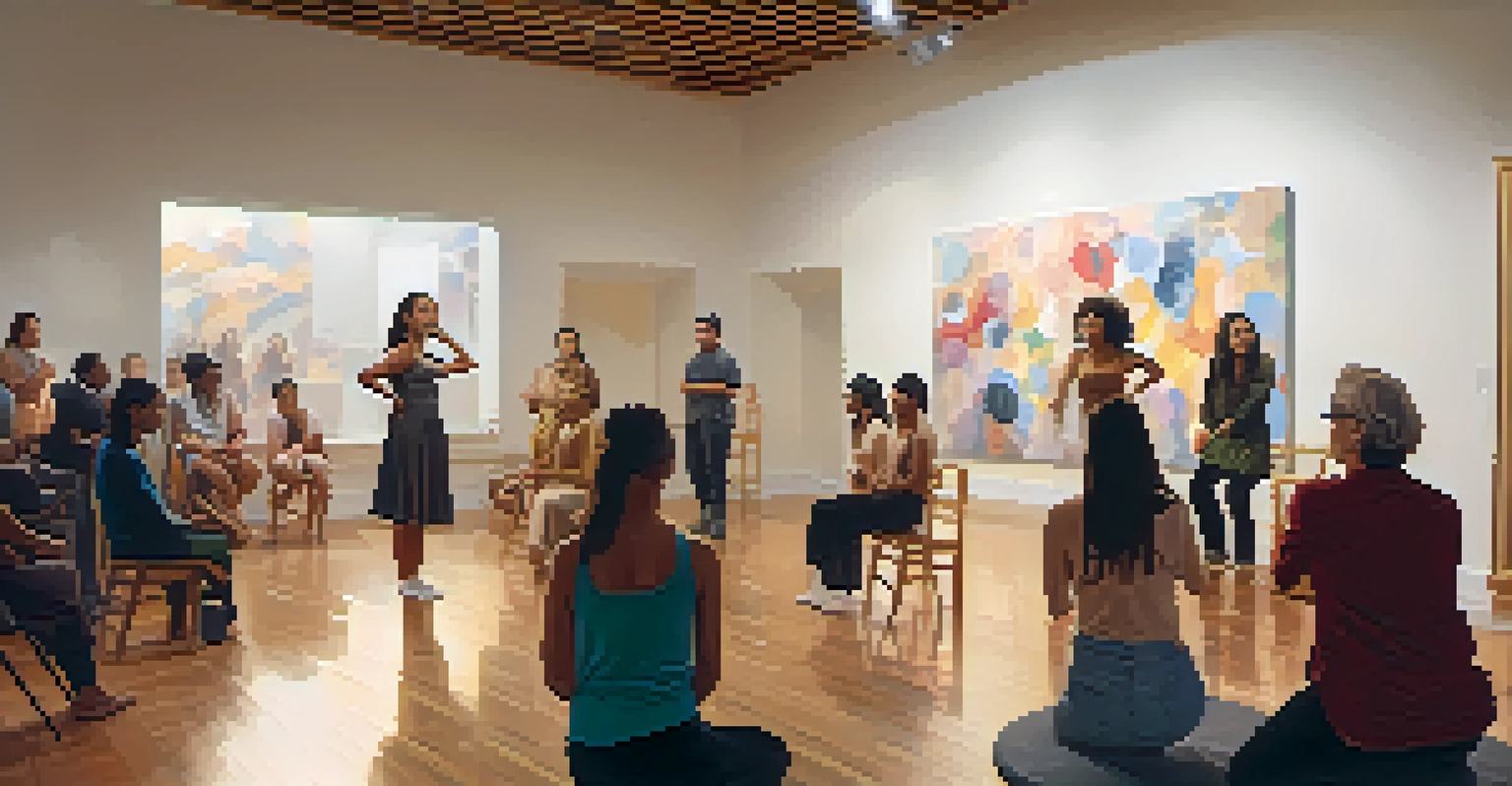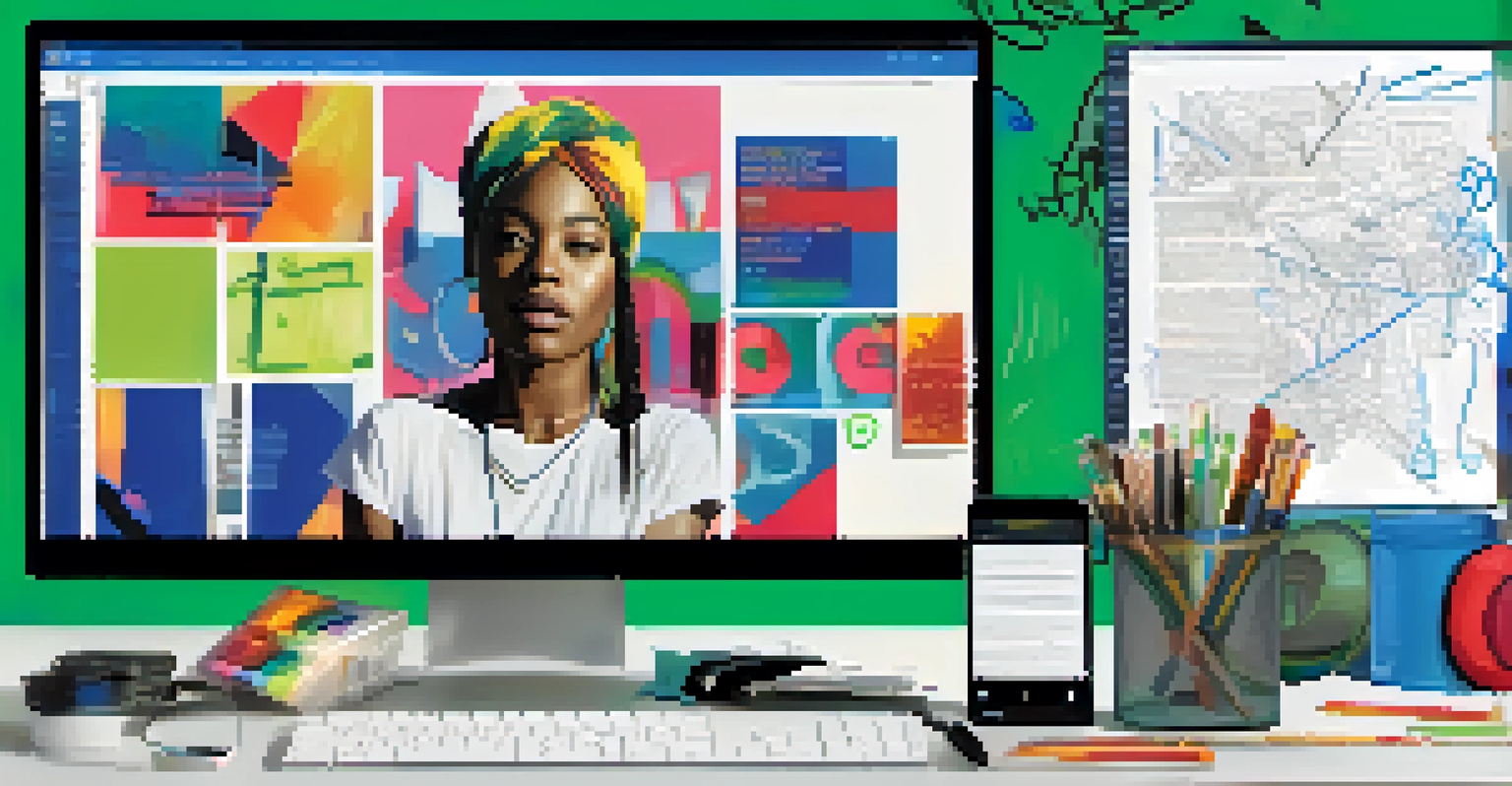Activism and Art: The Power of Creative Protest Movements

The Intersection of Art and Activism in Society
Art and activism have long been intertwined, each fueling the other. When artists create works that reflect social issues, they spark conversations that might otherwise go unheard. This connection allows art to serve as a platform for marginalized voices, making complex issues more relatable and accessible.
Art is not a mirror held up to reality, but a hammer with which to shape it.
In many ways, art acts as a mirror to society, reflecting both its beauty and its flaws. From the vibrant murals on city walls to performance art in community spaces, these creative expressions challenge the status quo. They compel audiences to confront uncomfortable truths and engage with the world around them.
Related Resource
As we explore this relationship further, we see how art not only highlights problems but also inspires action. Creative expressions can motivate individuals to join movements, fundamentally changing how we understand and approach social justice.
Historical Examples of Art as Protest
Throughout history, we can find numerous examples of art serving as a form of protest. Think of the iconic 'Guernica' by Pablo Picasso, which powerfully depicts the horrors of war. This painting not only memorializes the tragedy of the Spanish Civil War but also serves as a universal symbol against violence and oppression.

Similarly, the Harlem Renaissance showcased how artists used their work to express the struggles and aspirations of African Americans. Jazz, poetry, and visual art from this period became powerful tools for social commentary and cultural pride, influencing generations to come.
Art as a Catalyst for Change
Art serves as a powerful platform for marginalized voices, sparking important conversations about social issues.
These historical examples remind us that art has always been a catalyst for change. By examining these movements, we can appreciate how artistic expression has pushed boundaries and sparked dialogues about crucial societal issues.
Modern Movements and Artistic Expression
In today's world, we witness a surge in creative protest movements, particularly in response to pressing social issues like climate change and racial injustice. Artists are using their talents to amplify the voices of those often left unheard. This modern wave of activism transcends traditional boundaries, reaching audiences through social media and public installations.
The role of the artist is to make the revolution irresistible.
For instance, street art has become a prominent form of expression for many activists. Artists like Banksy use graffiti to convey powerful messages that resonate globally, often addressing themes of inequality and human rights. These works invite viewers to engage with the content, fostering a sense of community and shared purpose.
Related Resource
In this digital age, art's reach has expanded, allowing movements to gain traction like never before. Combining visuals with social media campaigns enhances the impact of creative protests, making them more accessible to a wider audience.
The Role of Digital Art in Activism
With the rise of technology, digital art has emerged as a significant player in the realm of activism. From viral memes to powerful videos, digital creations can spread quickly and widely, captivating audiences across the globe. This immediacy allows artists to respond to social issues in real-time, keeping conversations alive and relevant.
Social media platforms have become canvases for artistic expression, where messages can be shared and amplified. Hashtags like #ArtForChange create networks of solidarity, connecting artists and activists in a shared mission. The ability to share artwork instantly fosters a sense of community, motivating individuals to take action.
Collaboration Enhances Impact
Partnerships between artists and activists create innovative campaigns that effectively raise awareness and inspire action.
Moreover, digital art breaks down geographical barriers, allowing contributions from diverse voices. This inclusivity enriches the dialogue surrounding social issues, leading to a more nuanced understanding of the challenges we face today.
Collaborations Between Artists and Activists
Collaboration is a powerful aspect of merging art and activism. Many artists partner with activists to create impactful projects that resonate on both emotional and intellectual levels. These partnerships often result in innovative campaigns that leverage the strengths of both fields, enhancing the overall message.
For example, initiatives like 'The People's Climate March' have seen artists collaborate with environmentalists to raise awareness about climate change. Through installations, performances, and visual media, they create a compelling narrative that encourages public engagement and participation.
Related Resource
Such collaborations illustrate the potential for art to not only support existing movements but also to initiate new ones. By bringing together diverse perspectives, artists and activists can forge connections that inspire collective action and drive social change.
Challenges Faced by Artistic Activists
While the fusion of art and activism is powerful, it is not without its challenges. Artists often grapple with censorship, as their work may provoke backlash from authorities or opposing groups. This can lead to difficult choices about how to express their messages while maintaining their artistic integrity.
Additionally, funding can be a significant hurdle for artists involved in activism. Many rely on grants and donations to support their projects, which can be uncertain. This financial instability may limit the scope and reach of their work, making it harder to sustain long-term initiatives.
Digital Art Expands Activism's Reach
The rise of digital art and social media enables artists to quickly share their messages, fostering a global community of support.
Despite these challenges, many artists persist, driven by their passion for social change. Their resilience often leads to innovative solutions that allow them to navigate obstacles while continuing to advocate for the causes they believe in.
The Future of Activism Through Art
Looking ahead, the future of activism through art appears promising. As societal issues evolve, so too will the ways in which artists respond and engage with these challenges. We can expect to see even more interdisciplinary collaborations, blending art with technology and community action to address pressing concerns.
Furthermore, as younger generations become more involved in activism, we will likely witness a shift in artistic expression. Their unique perspectives and experiences will shape the narratives we see in art, creating fresh dialogues that resonate with diverse audiences.

Ultimately, the power of creative protest movements lies in their ability to inspire and mobilize. As artists continue to harness their talents for social change, we can anticipate a vibrant landscape of activism that pushes boundaries and encourages us all to engage in meaningful conversations.